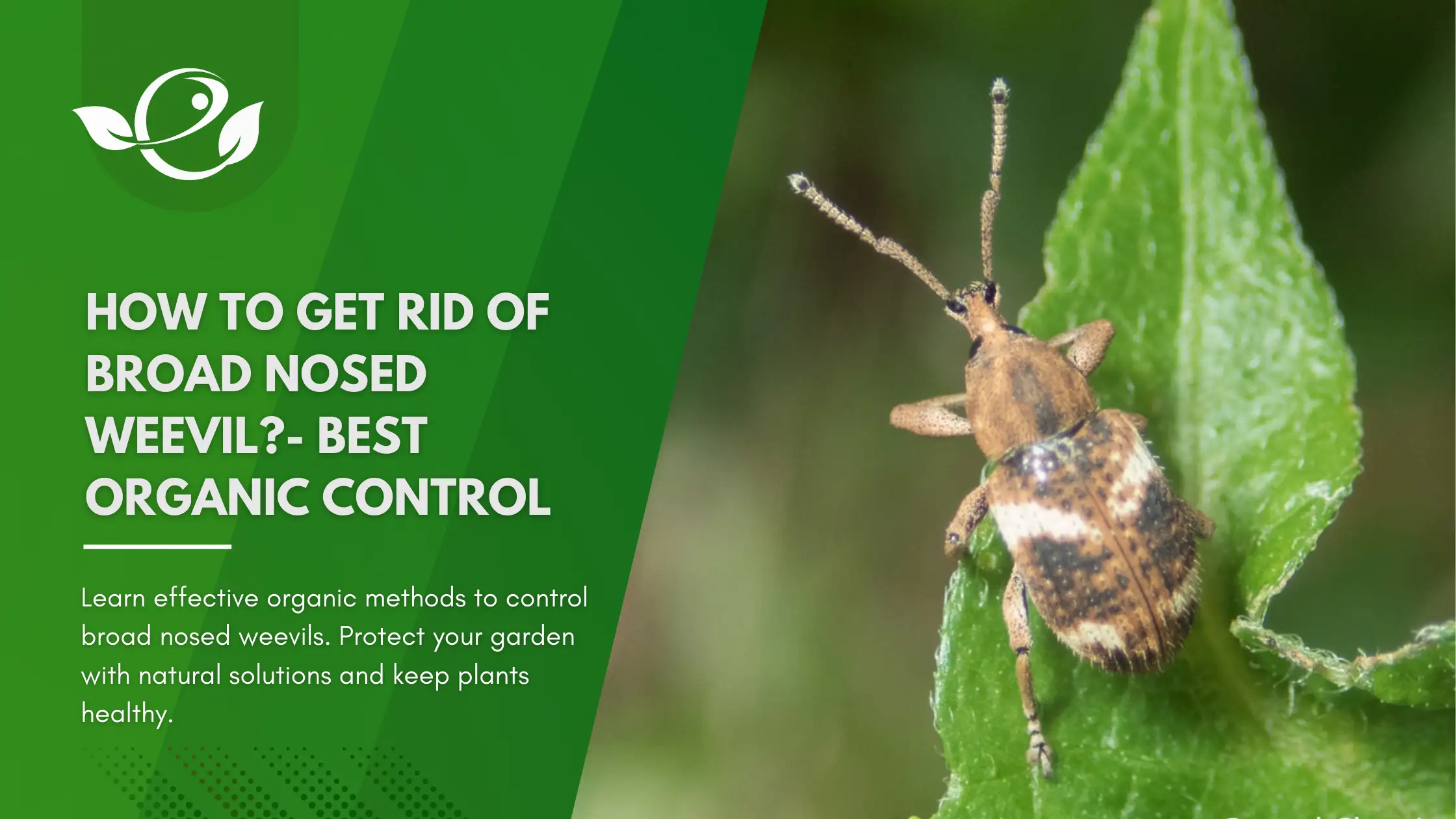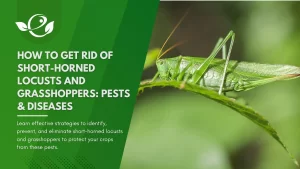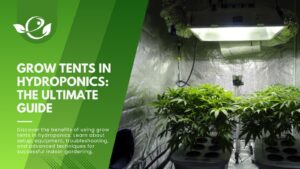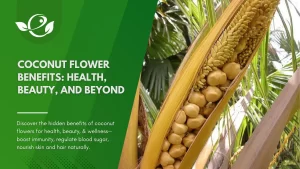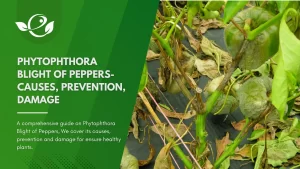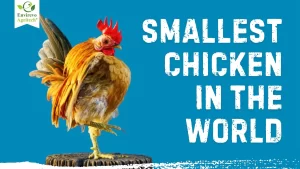Table of Contents
The broad-nosed weevil may be small, but its impact on your garden can be immense. These voracious pests are notorious for their leaf-notching habits, and their insatiable larvae can devastate root systems, often going unnoticed until the damage is extensive. As a gardener, protecting your plants from pests like the broad-nosed weevil is essential. However, many are turning to organic solutions as a safer and more sustainable way to safeguard their gardens.
In this article, we’ll explore everything you need to know about broad-nosed weevils, from identifying them and understanding their life cycle to effectively controlling them using organic methods. We’ll focus on natural solutions that protect your plants without harming beneficial insects or introducing toxic chemicals into your soil. Let’s dive in and discover how you can reclaim your garden from this destructive pest.
Understanding the Broad-Nosed Weevil
What is a Broad-Nosed Weevil?
Broad-nosed weevils are a type of beetle that feeds on a wide range of plants. With their distinctive long snouts and broad bodies, they’re easily recognizable. Unlike other beetles, broad-nosed weevils can’t fly, which limits their range but not their appetite. They pose a threat to both ornamental plants and crops, making them a serious concern for gardeners.
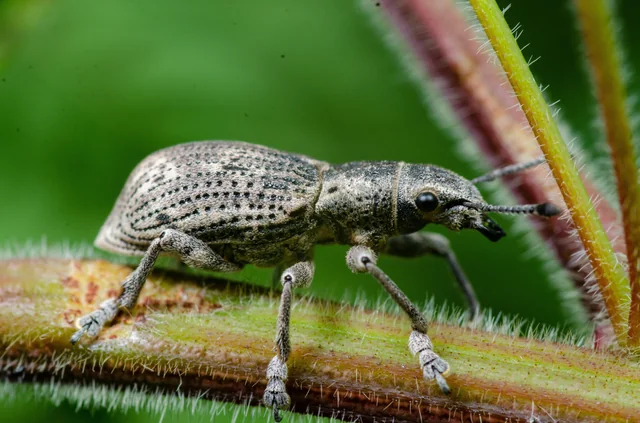
What caused it?
Symptoms are caused by both adults and grubs of the grey weevil, Myllocerus sp. Adult weevils are small and light grey in colour, with darker patterns on their wing covers and head. Females lay 360 eggs on average in the soil over a period of 24 days. After hatching, the larvae burrow into the soil where they feed on plant roots. The grubs then reproduce in the soil. Adult weevils will survive in winter, hidden under debris. Myllocerus sp. has a wide range of host plants from ornamental, vegetable to fruit species.
Why Control is Important
Broad-nosed weevils damage plants at multiple stages of their life cycle. The larvae feed on roots, weakening the plant and stunting its growth, while adults feed on leaves, creating characteristic notches. This double-edged damage can lead to the plant’s eventual death if not controlled.
Identifying Broad-Nosed Weevils
To control broad-nosed weevils effectively, you must first know how to identify them. Here’s what to look for:
Physical Characteristics
- Size: Adults are usually about 1/4 to 1/2 inch long.
- Color: They are typically dark brown to black.
- Distinctive Features: Broad-nosed weevils have an unmistakable snout and elbowed antennae, giving them a unique profile. They’re wingless, which limits their mobility.
Signs of Infestation
- Notched Leaves: The most obvious sign of an adult broad-nosed weevil infestation is notched leaves. They feed from the edges, leaving semi-circular holes.
- Wilting or Stunted Plants: If your plants appear stunted or wilted despite proper care, it could be a sign that weevil larvae are damaging the roots.
- Presence of Larvae: Upon inspection of the soil around affected plants, you may find larvae, which are small, legless, and white.
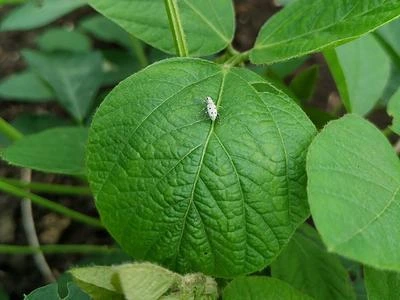
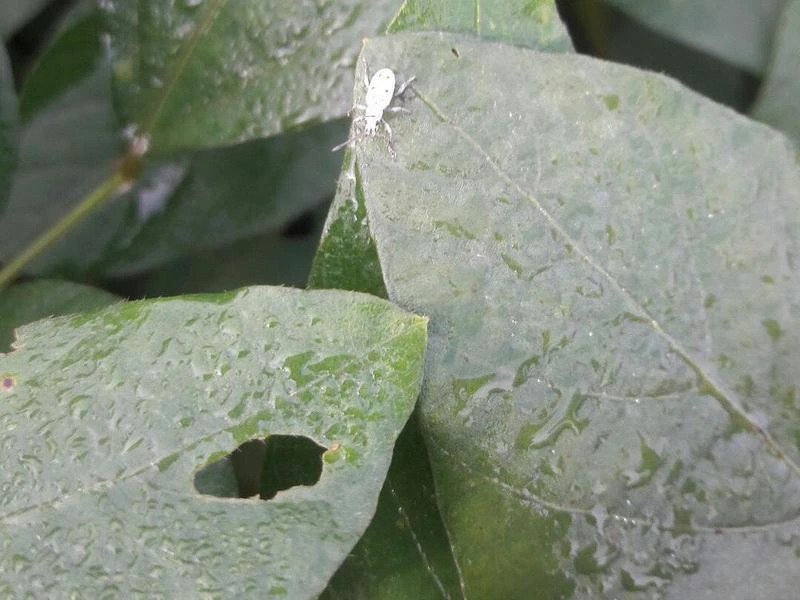
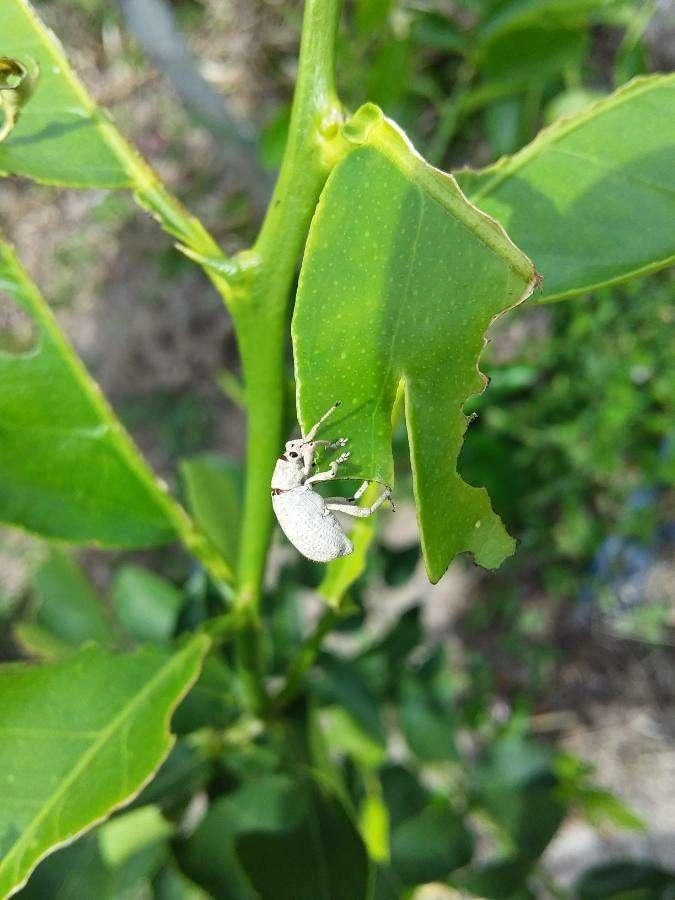
Light grey with dark patterns on wing covers and head of adult weevils. The first visible symptoms of an infestation by the grey weevil are notched leaf margins. Adult weevils prefer to feed on the margins of new plants and proceed inward. Severely infected leaves can be completely defoliated. Healthy plants will recover from the feeding damage, but young seedlings will die at the time of flowering. Severe infestation might restrict plant growth. Affected plants can be easily pulled out.
Commonly Affected Plants
Broad-nosed weevils attack a variety of plants, including:
- Ornamental plants (rhododendrons, azaleas)
- Vegetables (lettuce, carrots, potatoes)
- Fruits (strawberries, grapes)
Life Cycle of Broad-Nosed Weevils
Understanding the life cycle of the broad-nosed weevil is key to controlling them effectively.
- Egg Stage: Females lay eggs in the soil around host plants. They are often laid in clusters, and once they hatch, the larvae move toward the roots for feeding.
- Larval Stage: In the larval stage, weevils cause significant root damage, making this phase critical to target for control. Larvae feed on roots, weakening the plant and making it susceptible to disease.
- Adult Stage: Adults emerge from the soil and begin feeding on leaves, causing the characteristic notched damage. They are most active at night, making detection difficult during the day.
- Seasonal Patterns: Broad-nosed weevils are typically most active in the spring and fall. Since they’re nocturnal, gardeners are more likely to find evidence of their feeding than the insects themselves.
Organic Control Methods for Broad-Nosed Weevils
Let’s explore some of the best organic methods for controlling broad-nosed weevils effectively without harming your plants or the environment.
Drench your soil with Bacillus thuringiensis ssp tenebrionis (Btt) @ 2.5 mg/lit. The bacteria can also be used in the root tip method. You dip the roots of your plant in the Btt dilution and air dry them before replanting in the soil. The mortality of the larvae is dependent on the maintenance of humidity and temperature. Apply neem cake @ 500 kg/ha at the time of the last ploughing.
Natural Predators
Introducing natural predators is an effective, eco-friendly approach to controlling weevils.
- Predatory Beetles: Certain beetles are known to prey on weevils and their larvae.
- Parasitic Nematodes: These microscopic worms target weevil larvae in the soil, killing them before they can mature into adults. They are particularly effective in controlling the larval stage.
Hand-Picking
For small infestations, hand-picking adult weevils is an effective method.
- Best Time to Hand-Pick: Since weevils are nocturnal, it’s best to inspect plants after dusk.
- Tools: Use a flashlight and a small container to collect and remove them from your garden.
Neem Oil Spray
Neem oil is a natural pesticide that disrupts the weevil’s lifecycle, making it a great option for organic control.
- Application: Dilute neem oil with water and apply to leaves and soil around plants.
- Frequency: Apply every 7-10 days during active infestation periods.
Diatomaceous Earth
Food-grade diatomaceous earth (DE) is a natural, non-toxic powder that kills weevils on contact by damaging their exoskeletons.
- Application: Dust around the base of plants and on any visible weevils.
- Precautions: Reapply after rain, as moisture reduces its effectiveness.
Beneficial Nematodes
Beneficial nematodes can effectively reduce the weevil population at the larval stage.
- How to Use: Mix nematodes with water and apply to the soil around affected plants.
- Effectiveness: Nematodes seek out and kill weevil larvae, preventing them from maturing into adults.
Garlic or Hot Pepper Spray
Both garlic and hot pepper act as natural repellents, discouraging adult weevils from feeding on your plants.
- DIY Recipe: Blend garlic or hot pepper with water, strain, and spray onto leaves.
- Frequency: Reapply every few days for best results, especially after rainfall.
Chemical Control Methods for Broad-Nosed Weevils
Always consider an integrated approach with preventive measures together with biological treatments, if available. Chemical treatment has only limited success for managing grey weevil as their eggs, larvae, and pupae are located in the soil. Adult weevils are also difficult to handle because of their ability to fly, hide and feign death. Problems arise with the development of resistance. You can spray quinalphos or chlorpyrifos at 20 days after sowing.
Cultural Practices to Prevent Broad-Nosed Weevil Infestation
Preventing weevil infestations through proper cultural practices is essential for long-term control.
Garden Hygiene
Keeping your garden clean reduces the chances of weevils finding shelter and food sources.
- Remove Plant Debris: Clear dead leaves and weeds, which can provide shelter for weevils.
- Inspect Regularly: Regular inspections can help catch infestations early.
Companion Planting
Certain plants can help repel broad-nosed weevils, making companion planting an effective preventive measure.
- Examples: Mint and garlic are known to deter weevils, making them excellent choices for interplanting.
Mulching Techniques
Mulching can create a barrier that prevents weevils from accessing the soil, reducing the likelihood of infestation.
- Types of Mulch: Straw or wood chips work well for this purpose.
- Application: Apply a thick layer around the base of susceptible plants.
Soil Cultivation
Regularly cultivating the soil can expose larvae and eggs to natural predators, disrupting the weevil’s life cycle.
- Frequency: Loosen soil around plants every few weeks, especially in spring and fall.
Monitoring and Early Detection
Staying vigilant is key to preventing an infestation from taking hold. Here are some methods for monitoring weevil activity in your garden.
- Routine Inspections: Perform regular inspections of your plants, focusing on weevil-prone plants. Look for notched leaves or signs of root damage.
- Sticky Traps: Place sticky traps around plants to capture weevils.
- Cardboard Barriers: Lay cardboard around the base of plants to trap adults at night.
- Light Trapping Techniques: Broad-nosed weevils are attracted to light. Set up a low light source in the garden to attract and catch weevils during their nighttime activity.
Conclusion
Broad-nosed weevils may be resilient pests, but with the right strategies, you can protect your garden without resorting to harsh chemicals. By using natural predators, neem oil, beneficial nematodes, and other organic methods, you’ll keep your plants safe while maintaining a healthy, sustainable garden ecosystem. Gardening is a journey, and staying vigilant, practising good cultural methods, and encouraging biodiversity is crucial for keeping pests like the broad-nosed weevil at bay. With these organic control methods, you can enjoy a thriving, weevil-free garden.
